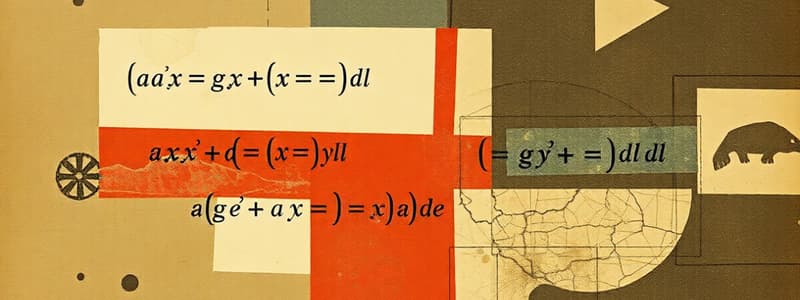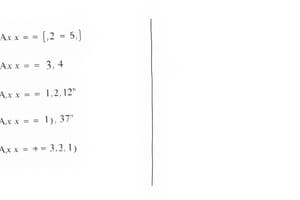Podcast
Questions and Answers
What is the approximate average percentage of the Earth's surface area covered by land?
What is the approximate average percentage of the Earth's surface area covered by land?
- 29%
- 28%
- 30% (correct)
- 31%
Which of these has a lower density: the oceanic crust, or the continental crust?
Which of these has a lower density: the oceanic crust, or the continental crust?
- They have the same density
- Continental Crust
- It is impossible to determine based on the information provided
- Oceanic Crust (correct)
What is the correct order of layers, from the Earth's surface to the center?
What is the correct order of layers, from the Earth's surface to the center?
- Mantle, Outer core, Inner core, Crust
- Crust, Mantle, Outer core, Inner core (correct)
- Inner core, Outer core, Mantle, Crust
- Crust, Inner core, Outer core, Mantle
Which part of the Earth's interior is primarily liquid?
Which part of the Earth's interior is primarily liquid?
Where does most earthquake activity occur?
Where does most earthquake activity occur?
Flashcards
Image Analysis
Image Analysis
The examination of visual images to interpret and understand their content.
Visual Communication
Visual Communication
The conveyance of ideas and information through visual aids such as images, graphs, and designs.
Color Theory
Color Theory
A set of principles used to understand how colors interact and affect each other in design.
Design Principles
Design Principles
Signup and view all the flashcards
Composition
Composition
Signup and view all the flashcards
Study Notes
Absolute Value Equations and Inequalities
-
Absolute Value Definition: The absolute value of a number (x), written |x|, represents the undirected distance from x to 0 on a number line.
-
Solving Absolute Value Equations (Case 1): To solve an equation of the form |ax + b| = k (where k > 0), solve the compound equation ax + b = k or ax + b = -k. This typically results in two solutions.
-
Solving Absolute Value Inequalities (Case 2): To solve |ax + b| > k, solve the compound inequality ax + b > k or ax + b < -k. The solution set is often disjoint intervals.
-
Solving Absolute Value Inequalities (Case 3): To solve |ax + b| < k, solve the three-part inequality -k < ax + b < k. The solution is a single interval. These rules also apply for greater-than-or-equal-to (≥) and less-than-or-equal-to (≤) inequalities. The solution set for inequalities often includes endpoints using brackets instead of parentheses.
-
Absolute Value Properties:
- The absolute value of an expression is never negative (|a| ≥ 0).
- The absolute value of an expression is equal to zero only when the expression is zero.
Studying That Suits You
Use AI to generate personalized quizzes and flashcards to suit your learning preferences.




